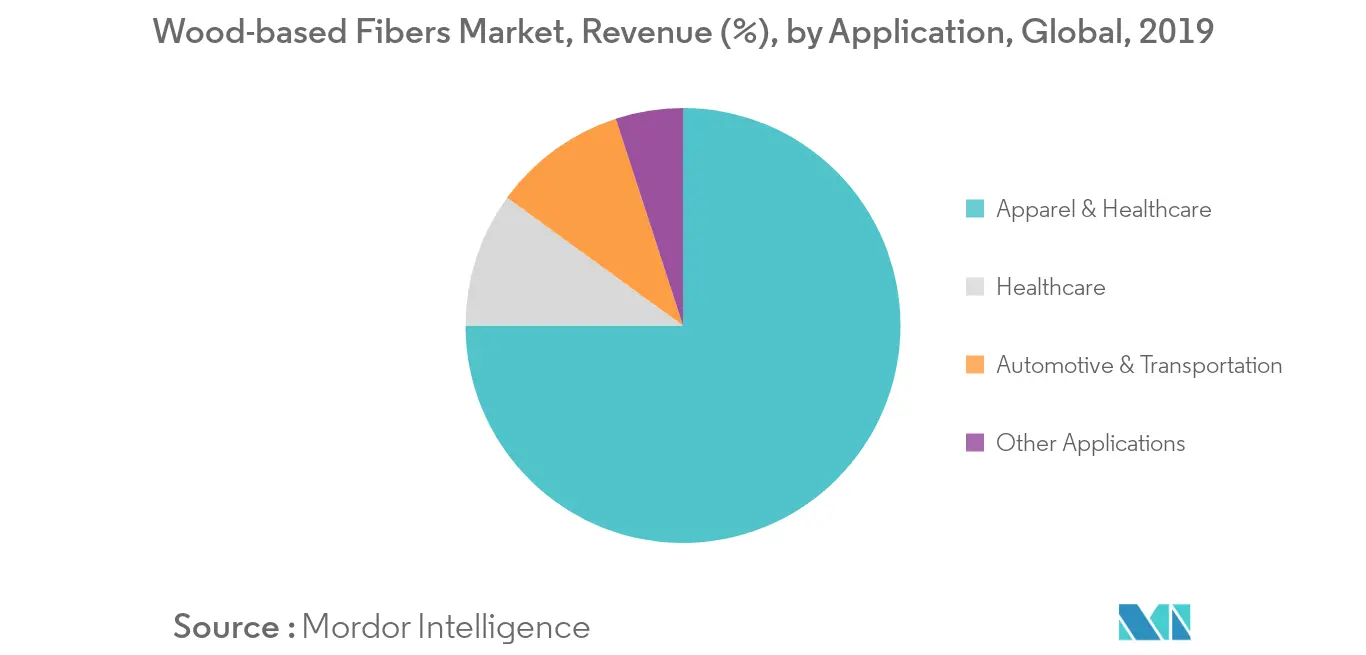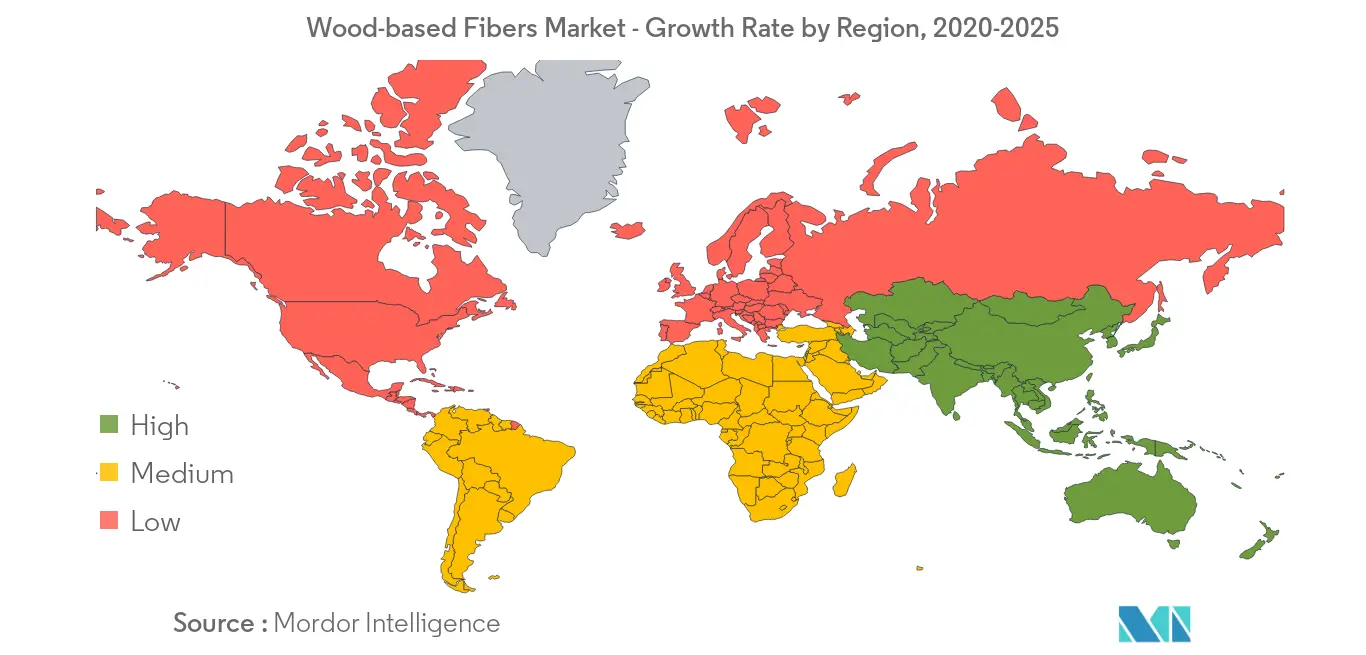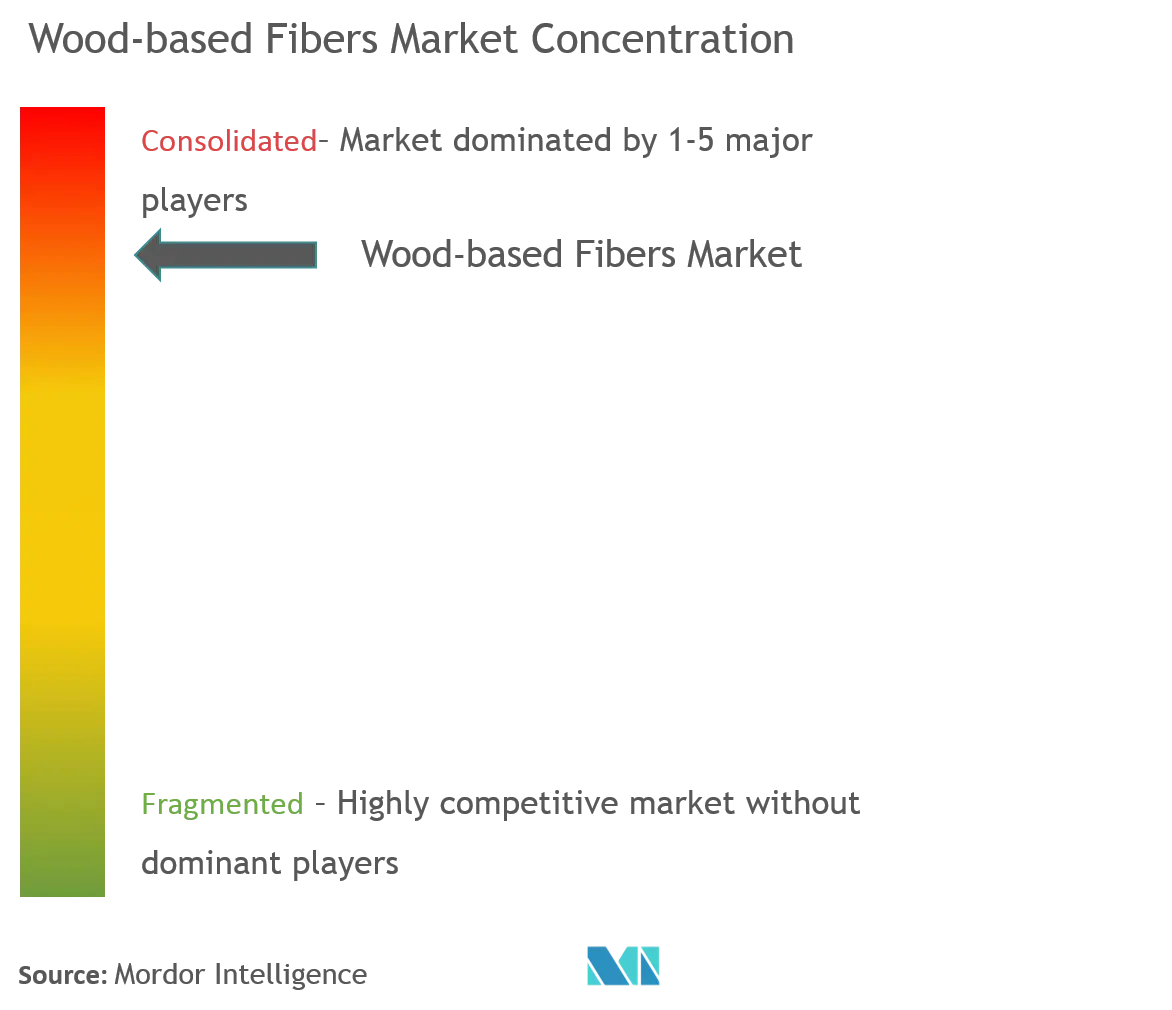Wood-based Fibers Market Size and Share

Wood-based Fibers Market Analysis by Mordor Intelligence
The Wood-based Fibers Market is expected to register a CAGR of greater than 6% during the forecast period.
Rising demand from the textile industry is driving the market growth.
Availability of substitutes such as synthetic fibers, cotton, and wool are likely to hinder the growth of the market.
Global Wood-based Fibers Market Trends and Insights
Growing Demand from Textile Industry
In the recent years, interest in wood-based cellulosic fibers has increased significantly, due to its sustainability characteristics.
These fibers are produced from the natural polymer cellulose, that has been extracted from plant-based materials, and then further shapes the polymers into fibers using different technologies (such as viscose, modal, lyocell) with the chemical structure identical to natural fibers such as cotton and wool.
Each of the fiber types has its own special characteristics that are valued in the textile industry, thus widely preferred in textile industry through the upcoming years. Overall, rising textile industry across several countries is expected to drive the market growth of wood-based fibers.
According to SelectUSA, the United States' textile and apparel industry was worth around USD 70 billion and remained one of the most significant sectors of the manufacturing industry in 2019.
According to National Development and Reform Commission, China's textile industry have seen stable development in the first 11 months of 2019. Domestic retail sales of apparel and knitwear stood at CNY 1.2 trillion (USD 172.4 trillion), in 2019, generating a growth of 3% from the year 2018.
Moreover, according to Union Budget 2020 India, textile industry plays a significant role in the economy of the country, contributing over 13% of the industrial output and over 2% to the GDP of the country.
The above mentioned factors are expected to drive the market for wood-based fibers in textile industry during the forecast period.

Asia-Pacific Region to Dominate the Global Market
Asia-Pacific region is expected to dominate the market for wood-based fibers owing to rising demand from countries such as China and India.
According to National Development and Reform Commission, China's textile industry has seen stable development in the first 11 months of 2019. Domestic retail sales of apparel and knitwear stood at CNY 1.2 trillion (USD 172.4 trillion), in 2019, increased by 3% from the year 2018.
Moreover, According to Union Budget 2020 India, textile industry plays a significant role in the economy, contributing over 13% of the industrial output and over 2% to the GDP of the country.
The Indian textiles industry is extremely varied, with the hand-spun and hand-woven textiles sectors, knitting sector. The Indian textiles industry valued USD 250 billion in 2019, as per the statistics provided by India Brand Equity Foundation (IBEF).
The textile industry plays a vital part in the national economy of Japan. Owing to the higher demand for Japanese goods, the manufacturing industry has been witnessing growth in the country. Additionally, the adoption of the latest technologies is boosting the demand for textiles in Japan.
Indonesian textile and textile products (TPT) recorded an export value of USD 12.78 billion. The Ministry of Industry estimated that textile exports will be valued at around USD 13.5-13.8 billion in 2019 and are estimated to increase further to USD 15 billion by the end of 2020. This is likely to increase the sector's share of Indonesia's total exports to 1.6%.
Such factors are expected to drive the market for wood-based fibers in the Asia-Pacific region.

Competitive Landscape
The global wood-based fibers market is consolidated in nature with few players occupying a major share in the global market. Some of the major companies in wood-based fibers market includes Lenzing, Sappi, Bracell, Grasim Industries Limited (Aditya Birla Group), Aoyang Technology, Rayonier Advanced Materials among others.
Wood-based Fibers Industry Leaders
-
Lenzing
-
Sappi
-
Aditya Birla Group
-
Rayonier Advanced Materials
-
Bracell
- *Disclaimer: Major Players sorted in no particular order

Global Wood-based Fibers Market Report Scope
The Wood-based Fibers Market report include:
| Viscose |
| Modal |
| Lyocell |
| Cupro |
| Other Types |
| Apparel & Textile |
| Healthcare (Including Personal Care) |
| Automotive & Transportation |
| Other Applications |
| Asia-Pacific | China |
| India | |
| Japan | |
| South Korea | |
| Rest of Asia-Pacific | |
| North America | United States |
| Canada | |
| Mexico | |
| Europe | Germany |
| United Kingdom | |
| France | |
| Italy | |
| Rest of Europe | |
| Rest of the World | South America |
| Middle-East and Africa |
| Type | Viscose | |
| Modal | ||
| Lyocell | ||
| Cupro | ||
| Other Types | ||
| Application | Apparel & Textile | |
| Healthcare (Including Personal Care) | ||
| Automotive & Transportation | ||
| Other Applications | ||
| Geography | Asia-Pacific | China |
| India | ||
| Japan | ||
| South Korea | ||
| Rest of Asia-Pacific | ||
| North America | United States | |
| Canada | ||
| Mexico | ||
| Europe | Germany | |
| United Kingdom | ||
| France | ||
| Italy | ||
| Rest of Europe | ||
| Rest of the World | South America | |
| Middle-East and Africa | ||
Key Questions Answered in the Report
What is the current Wood-based Fibers Market size?
The Wood-based Fibers Market is projected to register a CAGR of greater than 6% during the forecast period (2025-2030)
Who are the key players in Wood-based Fibers Market?
Lenzing, Sappi, Aditya Birla Group, Rayonier Advanced Materials and Bracell are the major companies operating in the Wood-based Fibers Market.
Which is the fastest growing region in Wood-based Fibers Market?
Asia Pacific is estimated to grow at the highest CAGR over the forecast period (2025-2030).
Which region has the biggest share in Wood-based Fibers Market?
In 2025, the Asia Pacific accounts for the largest market share in Wood-based Fibers Market.
What years does this Wood-based Fibers Market cover?
The report covers the Wood-based Fibers Market historical market size for years: 2019, 2020, 2021, 2022, 2023 and 2024. The report also forecasts the Wood-based Fibers Market size for years: 2025, 2026, 2027, 2028, 2029 and 2030.
Page last updated on:
Wood-based Fibers Market Report
Statistics for the 2025 Wood-based Fibers market share, size and revenue growth rate, created by Mordor Intelligence™ Industry Reports. Wood-based Fibers analysis includes a market forecast outlook for 2025 to 2030 and historical overview. Get a sample of this industry analysis as a free report PDF download.



